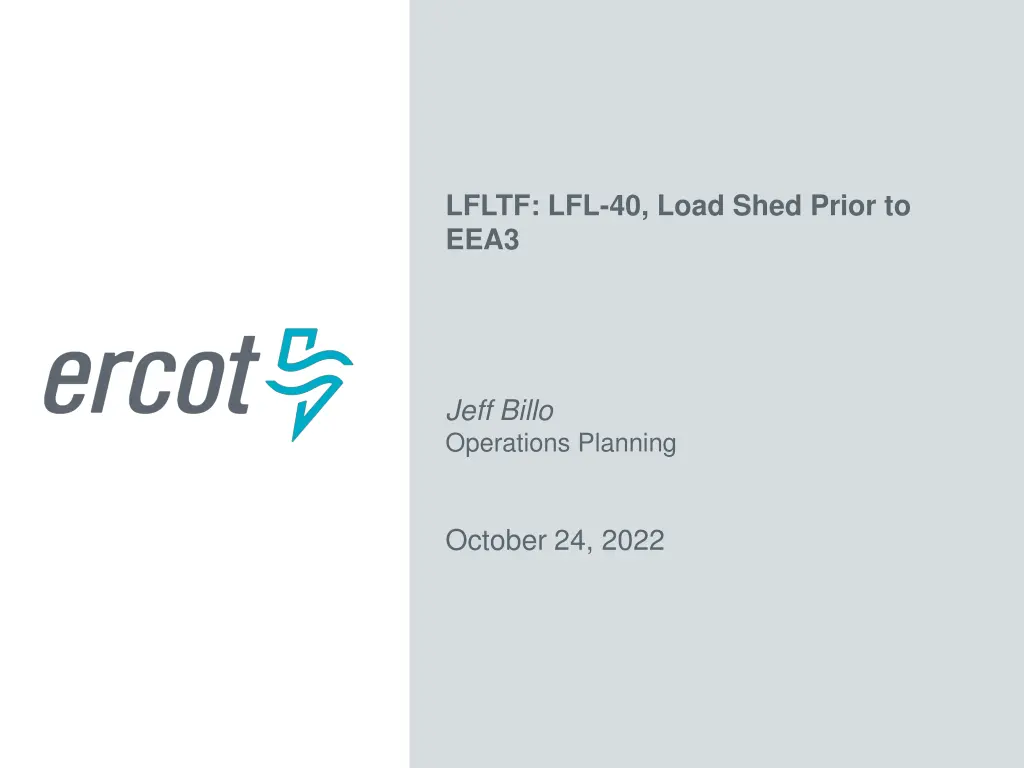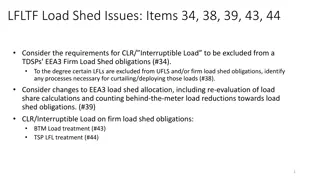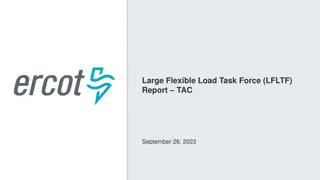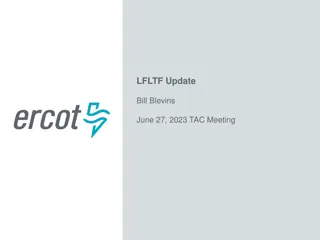
Interruptible Load Deployment Process in Energy Scarcity Conditions
Explore the detailed process for deploying interruptible load during energy scarcity conditions to maintain grid stability. Learn about triggers, actions, and proposed changes in the energy emergency alert levels.
Download Presentation

Please find below an Image/Link to download the presentation.
The content on the website is provided AS IS for your information and personal use only. It may not be sold, licensed, or shared on other websites without obtaining consent from the author. If you encounter any issues during the download, it is possible that the publisher has removed the file from their server.
You are allowed to download the files provided on this website for personal or commercial use, subject to the condition that they are used lawfully. All files are the property of their respective owners.
The content on the website is provided AS IS for your information and personal use only. It may not be sold, licensed, or shared on other websites without obtaining consent from the author.
E N D
Presentation Transcript
LFLTF: LFL-40, Load Shed Prior to EEA3 Jeff Billo Operations Planning October 24, 2022
Background Definition discussion at September 26, 2022 LFLTF meeting included proposed Interruptible Load In part, an Interruptible Load can interrupt it s load at a specified ramp rate when instructed by ERCOT for transmission issues or system capacity needs https://www.ercot.com/files/docs/2022/09/26/092622%20LFL%20D efintions%20v2.pptx LFL-40: Load shed prior to EEA3 Related LFLTF issues: LFL-33: Consider the impacts of and need for rules related to self-limiting RAS/CMPs LFL-35: Consider what changes to outage coordination processes are needed to incorporate LFL, including load assumptions for outage coordination studies LFL-38: To the degree certain LFLs are excluded from UFLS and/or firm load shed obligations, identify any processes necessary for curtailing/deploying those loads 2 PUBLIC
PRC Triggers in Scarcity Conditions (Existing) 3200 MW Deploy Non-Spin 3000 MW - Advisory 2500 MW - Watch 2300 MW - Energy Emergency Alert Level 1 1750 MW - Energy Emergency Alert Level 2 1000 MW - Energy Emergency Alert Level 3 3 PUBLIC
PRC Triggers in Scarcity Conditions (Proposed) 3200 MW Deploy Non-Spin 3200 MW Interruptible Load 3000 MW - Advisory 2500 MW - Watch 2300 MW - Energy Emergency Alert Level 1 1750 MW - Energy Emergency Alert Level 2 1000 MW - Energy Emergency Alert Level 3 4 PUBLIC
Summarized Process for Deploying Interruptible Load During Scarcity Conditions 1. If PRC is <3200 and not expected to recover above 3200 within 30 minutes without additional actions: a) Deploy blocks of NSRS to stay above 3200 b) Commit any available remaining offline generation If after step 1, PRC is <3200 and not expected to recover above 3200 within 30 minutes without additional actions: a) Deploy blocks of Interruptible Load If PRC is <3000 and not expected to recover above 3000 within 30 minutes without additional actions: a) Issue Advisory b) Confirm all available remaining offline generation is online c) Deploy ERS d) Deploy TO Distribution Voltage Reduction 2. 3. 4. 5 PUBLIC
Interruptible Load Blocks To avoid interrupting too much load at once, similar to Non- Spin Reserve Service, ERCOT would randomly group Interruptible Load into ~500 MW blocks ERCOT would monitor actual consumption in real-time to maintain situational awareness of how much load is in each block ERCOT may shed more than one block at a time to achieve the reliability objective 6 PUBLIC
Other Thoughts ERCOT does not envision shedding Interruptible Load to resolve transmission constraints except as a last resort during a transmission emergency, similar to the current treatment of Load Resources ERCOT suggests using a term other than Interruptible Load as this is a NERC-defined term that may mean something different than intended in the context of LFLs 7 PUBLIC
Questions/ Comments 8 PUBLIC




